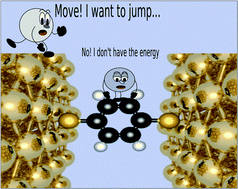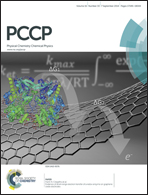Computational assignment of redox states to Coulomb blockade diamonds
Abstract
With the advent of molecular transistors, electrochemistry can now be studied at the single-molecule level. Experimentally, the redox chemistry of the molecule manifests itself as features in the observed Coulomb blockade diamonds. We present a simple theoretical method for explicit construction of the Coulomb blockade diamonds of a molecule. A combined quantum mechanical/molecular mechanical method is invoked to calculate redox energies and polarizabilities of the molecules, including the screening effect of the metal leads. This direct approach circumvents the need for explicit modelling of the gate electrode. From the calculated parameters the Coulomb blockade diamonds are constructed using simple theory. We offer a theoretical tool for assignment of Coulomb blockade diamonds to specific redox states in particular, and a study of chemical details in the diamonds in general. With the ongoing experimental developments in molecular transistor experiments, our tool could find use in molecular electronics, electrochemistry, and electrocatalysis.


 Please wait while we load your content...
Please wait while we load your content...